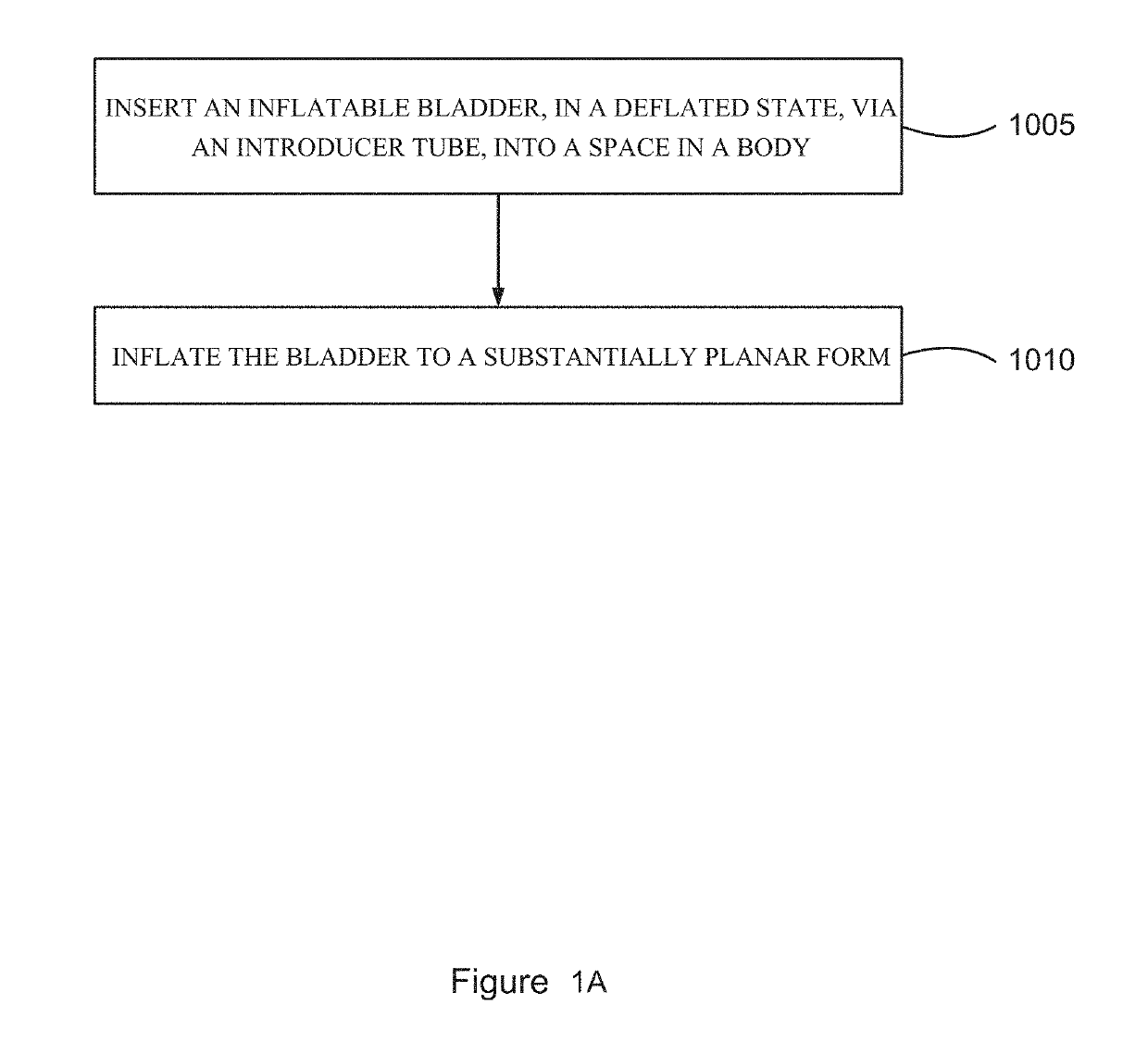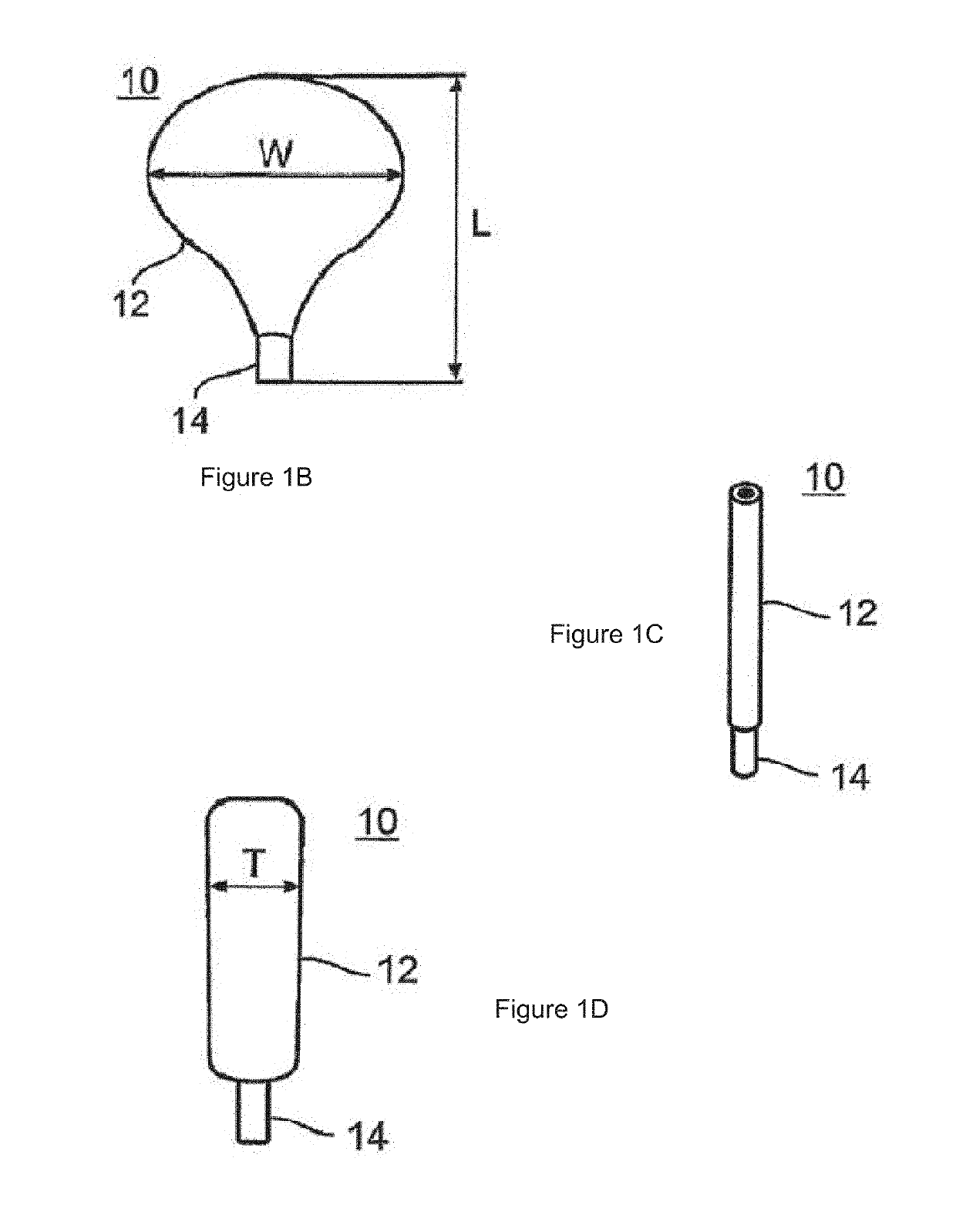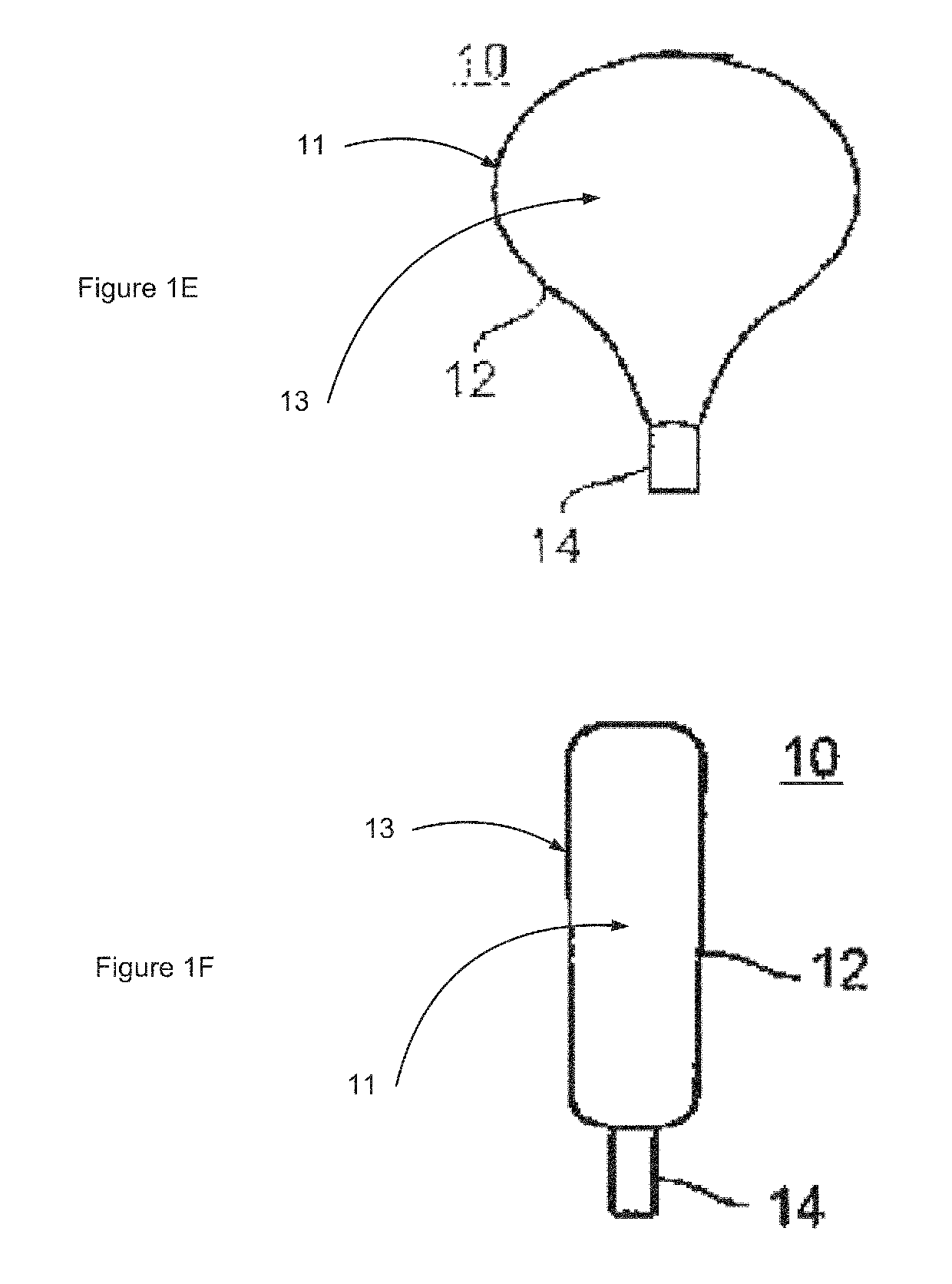Controlled tissue dissection systems and methods
a tissue dissection and control technology, applied in the field of expandable tissue dissection devices, can solve the problems of ineffective tactile sense of the patient, inadvertent tissue injury, and treatment procedure carries some degree of risk of injury to healthy tissues, and achieve the effect of restricting the lateral motion of the implan
- Summary
- Abstract
- Description
- Claims
- Application Information
AI Technical Summary
Benefits of technology
Problems solved by technology
Method used
Image
Examples
example expandable
Devices for Tissue Dissection / Separation
[0217]Reference is now made to FIGS. 1B-D, which are simplified illustrations of an inflatable bladder constructed according to an example embodiment of the present invention.
[0218]FIGS. 1B-1D illustrate an inflatable bladder which is referred to herein as device 10.
[0219]Device 10 includes a bladder 12 which can be constructed out of a biocompatible material. As used herein the term bladder refers to a chamber having an inner volume when expanded and less inner volume when collapsed.
[0220]Although FIGS. 1B-1D illustrate a planar balloon shape having an expanded state of length L (FIG. 1B e.g. from 1 to 20 cm), an expanded state of width W (FIG. 1B e.g. from 1 to 20 cm) and an expanded state of thickness T (FIG. 1D e.g. from 1 to 10 cm), it will be appreciated that bladder 12 can be fabricated in any shape suitable for uniform tissue lateral dissection and / or vertical displacement thus minimizing any localized pressure on the tissue.
[0221]In s...
PUM
 Login to View More
Login to View More Abstract
Description
Claims
Application Information
 Login to View More
Login to View More - R&D
- Intellectual Property
- Life Sciences
- Materials
- Tech Scout
- Unparalleled Data Quality
- Higher Quality Content
- 60% Fewer Hallucinations
Browse by: Latest US Patents, China's latest patents, Technical Efficacy Thesaurus, Application Domain, Technology Topic, Popular Technical Reports.
© 2025 PatSnap. All rights reserved.Legal|Privacy policy|Modern Slavery Act Transparency Statement|Sitemap|About US| Contact US: help@patsnap.com



